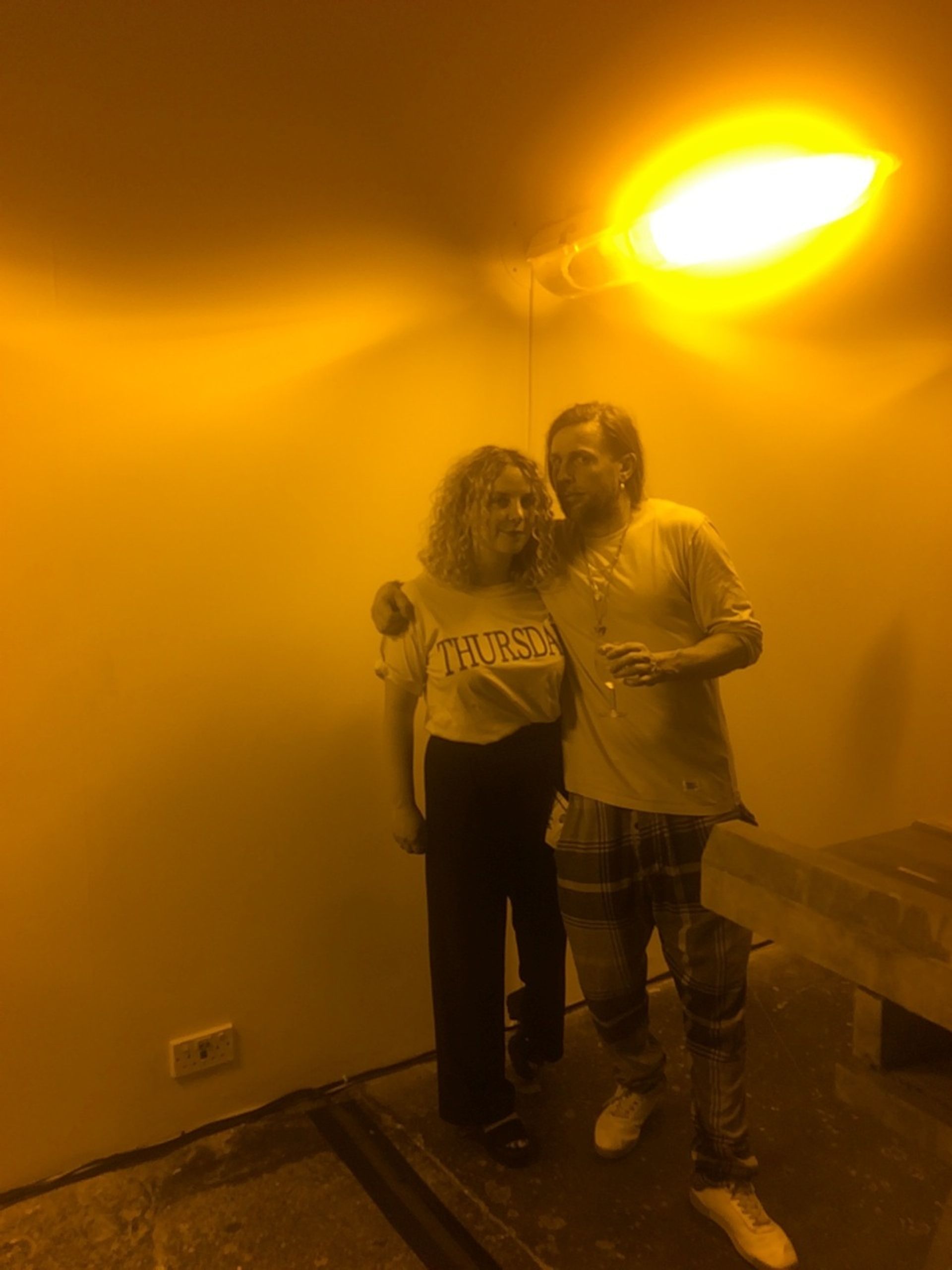A cathartic chance to let off steam and cast out some demons was offered by Mark Leckey last week (22 June). At the packed and sweltering private view of his new Cubitt show, Leckey rousingly rounded off a week of heatwave and mounting political disquiet by leading a mass rendition of the chanted sound piece that forms a key element of his new installation, Affect Bridge Age Regression (30 July).

Bathed in the Lucozade-yellow of sodium streetlights, the packed PV crowd enthusiastically belted out Leckey’s poetic tirade that aims to exorcise the demons of a concrete motorway bridge on the M53, which has also been lovingly recreated in model form at Cubitt.
Among those declaiming in the name of “Gog and Magog, the weird sisters of Albion, Jack of the Green, Robin Goodfellow and the Transport and General Worker’s Union” (to name but a few), were the artists Richard Wentworth, Ryan Gander, Steven Claydon and Dexter Dalwood; as well as other Leckey fans such as the Guardian chief culture writer Charlotte Higgins (whose Long Read article on the artist is required reading) and Richard Parry, the newly-appointed director of Glasgow International.

Lecky himself also deserves a shout-out for choosing to follow up his widely-acclaimed survey show at MoMA PS1 by collaborating with the tiny but utterly crucial artist-run, not-for-profit Cubitt gallery and studios, which since 1991 has done so much to support and nurture new talent—and always on a shoestring. In doing so, Lecky rightly flags up the often-overlooked fact that organisations like Cubitt are every bit as important (and stimulating to work with) as the big institutions and high profile galleries that attract the lion’s share of funding and attention. Artists may appreciate this contribution, but so should funders, gallerists and philanthropists.



